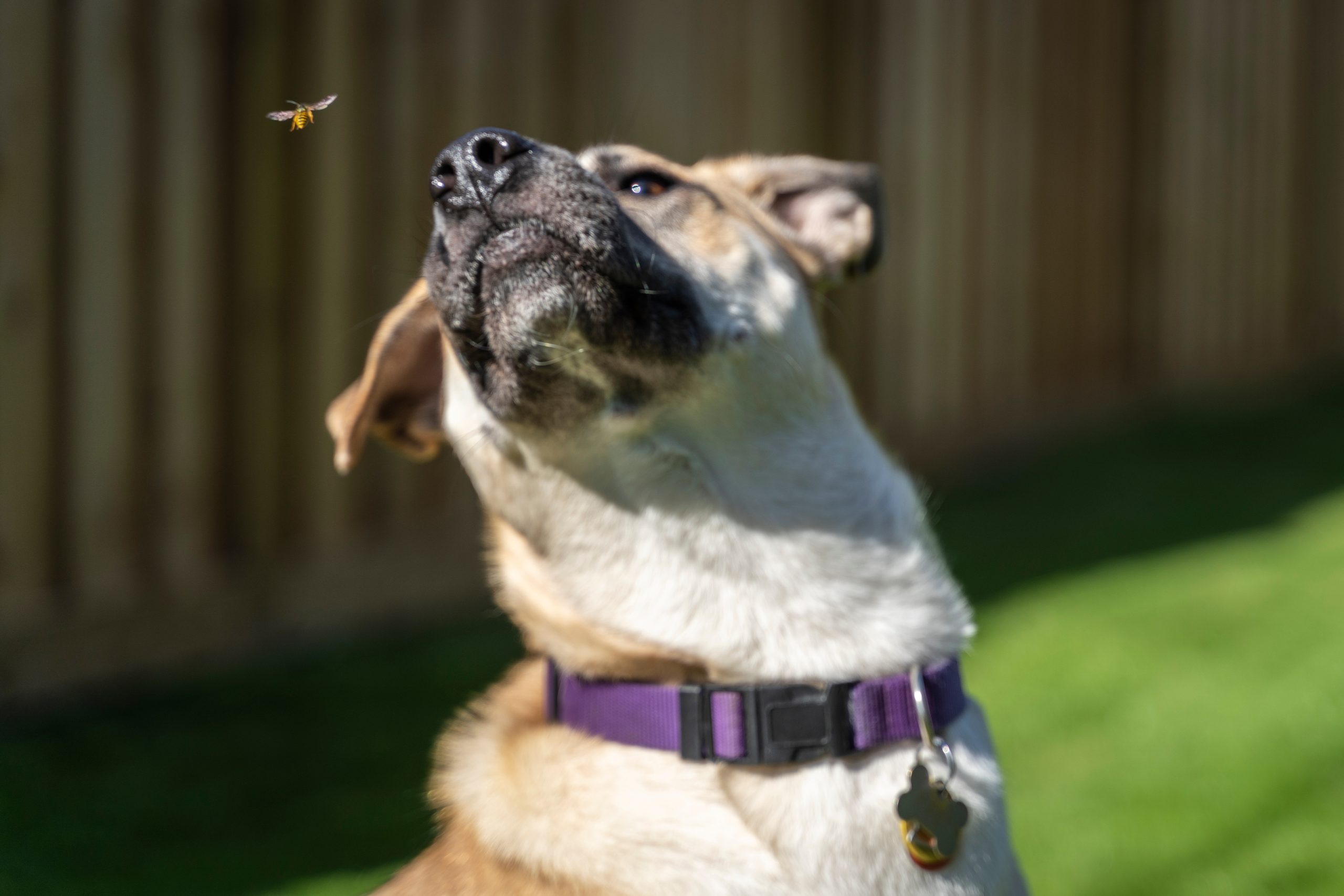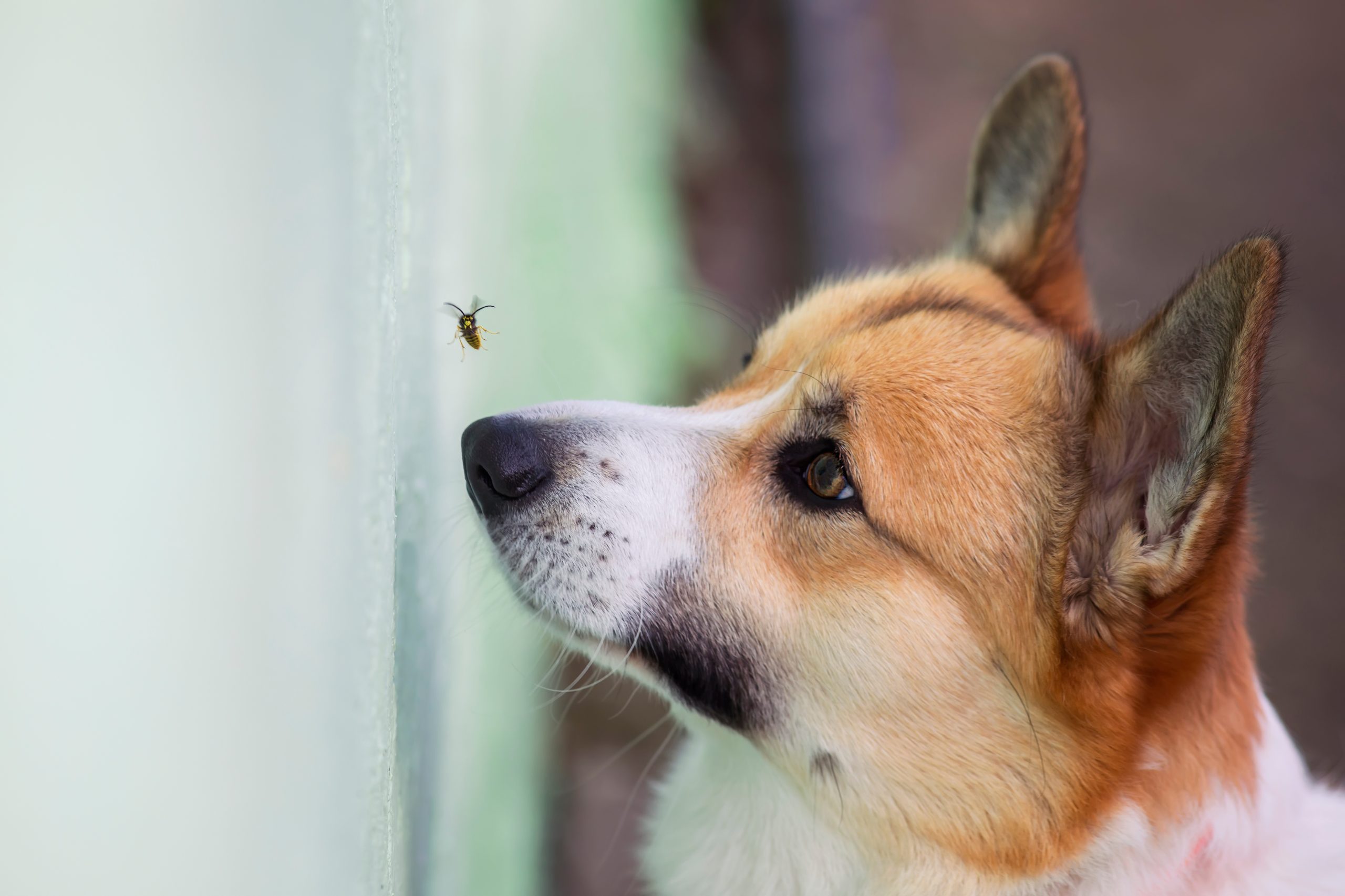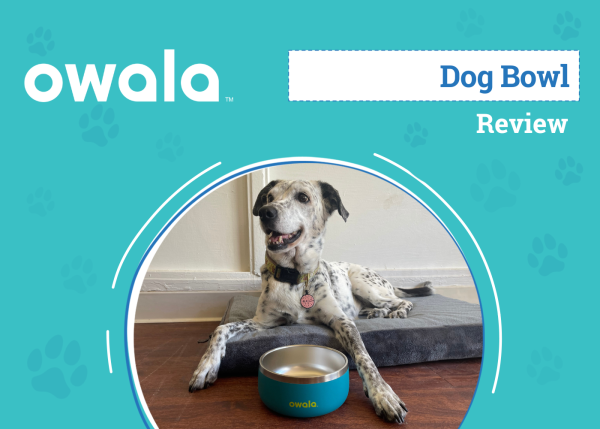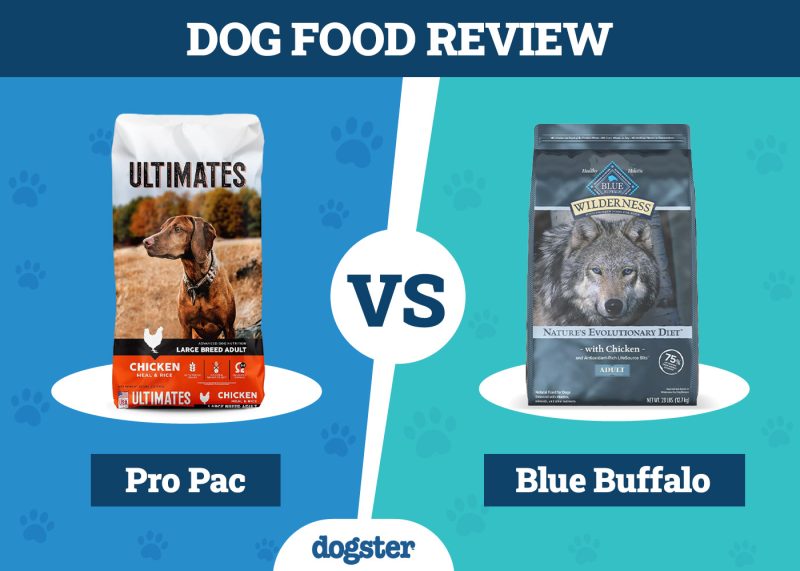In this article
If your dog ate a bee or got stung by a bee in the mouth, it’s important to remain calm. The odds of a dog dying after a bee sting are very low. However, allergic and anaphylactic reactions to bee venom are possible; the more stings that are present, the higher the risk for your dog.

What Should I Do if My Dog Got Stung by a Bee?
First, look for the stinger. The quicker the stinger is removed, the better. Removing the stinger will reduce your dog’s exposure to venom. Use something firm, like a business card or credit card, to flick the stinger off. Or you can grasp the stinger with tweezers (ideally close to the tip of the stinger) or remove it with your hands in a pinch. Please take care not to get bitten by your dog during this step, and don’t put yourself at risk.
If your dog has previously reacted to a bee sting, please immediately take them to the nearest open veterinary clinic. If your dog is known to react to bee venom, they will likely need veterinary intervention. The veterinarian will examine your dog and give treatment accordingly. Most of the time, the only treatment given will be an antihistamine, but sometimes, other interventions may be necessary.
If your dog has never been stung or reacted to a sting, you can monitor their signs. The bee sting is likely to be painful, so they might paw their face or be a little out of sorts. As with people, some dogs will not react to the sting, and short-term pain is the only sign of the bee sting.
The most serious consequence of a bee sting is anaphylaxis, which is a severe type of allergic reaction that can affect multiple organ systems at once. Signs of anaphylaxis include:
- Swelling or hives (small, raised lumps on the skin)
- Itching
- Vomiting
- Diarrhea
- Collapse
- Wobbly gait
- Lethargy
- Difficulty breathing
If your dog shows any signs of anaphylaxis after getting stung by or eating a bee, please take them to the nearest emergency clinic. As mentioned previously, death from a bee sting is unlikely but can occur if your dog goes into anaphylactic shock. With timely treatment, your dog’s prognosis is often good even with anaphylaxis.
If you need urgent veterinary advice, consult a vet online.
Did you know you can speak to a veterinarian without having to travel? Just head over to PangoVet. It's our online service where you can talk to a vet online and get the advice you need for your pet — all at an affordable price!

Veterinarians treat anaphylaxis with as-needed symptomatic treatment, which could include intravenous fluid therapy, oxygen therapy, medications like epinephrine (adrenaline), and other supportive medications. Your dog will need close monitoring in the hospital. Most dogs are well enough to go home after 12 to 24 hours. However, complications sometimes arise that necessitate a longer stay.
Anaphylaxis aside, your dog could experience a milder form of allergic reaction. However, on occasion, the signs of allergic reactions will progress to anaphylactic reactions. It’s helpful to think of the reaction as a spectrum of disease, with anaphylaxis being the most severe form. In either case, veterinary treatment is needed, and treatment will be targeted at the signs your dog is showing and will likely include antihistamine medication.
If your dog’s signs seem especially mild, you can call the veterinarian for advice. Sometimes they will recommend that you administer an over-the-counter antihistamine. However, if there is vomiting, diarrhea, or noisy breathing, you will need to bring your dog in. Signs of an allergic reaction include:
- Swelling at sting site
- Redness at the sting site
- Itchy skin
- Drooling
If your dog has eaten a bee or been stung by one and shows no signs of an allergic or anaphylactic reaction, you can care for them at home. Use a cold pack wrapped in a towel to apply a cold compress to the sting site. You can do this two to four times a day as needed for a few days. Mix baking soda and water and apply this to the sting site. Baking soda is a buffer that will neutralize the acid in the bee venom.
Your dog may need to wear an E-collar to prevent them from hurting themselves when scratching the sting site. If your dog appears very painful or the pain does not settle quickly, you should take them to the vet. You should also call the vet if you notice any signs you are concerned about over the next few days.


Frequently Asked Questions (FAQ)
How Soon Will a Dog React to Bee Stings?
Reactions to bee venom usually occur within 20 minutes but could be delayed for several hours. Anecdotally, subsequent reactions to bee venom can be worse than the initial one. If your dog has ever had an anaphylactic reaction to bee venom, it’s important to take preventative steps.
How Can I Prevent Bee Stings?
Bees are part of the ecosystem and can be difficult to avoid. If you walk in natural areas with a lot of bees, keep your dog on a leash so you can control their movements, and walk them away from bees if needed. Some plants attract bees more than others, so you could move these out of the area where your dog spends the most time.
If your dog eats a bee or gets stung and has severe reactions to the venom, a veterinary dermatologist can use venom-specific immunotherapy (VIT) to prevent these reactions in the future.
Why Do Dogs React to Bee Venom?
If a dog eats a bee or gets stung, it can cause various reactions. This is because bee venom contains a few ingredients that, in combination with others, generate a painful inflammatory and immunological reaction.
- Peptide 401: Causes histamine release, a compound produced by immune cells that produce allergic reactions.
- Hyaluronidase: Disrupts collagen in the skin, which allows venom components to enter the cells.
- Melittin: Causes pain and damages cell membranes.


Conclusion
The biggest takeaway from this is that your dog will definitely need to see a veterinarian if they’ve had a reaction to a bee sting before, or if they are showing negative signs. However, some dogs will show hardly any negative signs at all after eating a bee and will simply need to be monitored at home. If you’re ever in doubt, it’s best to phone a vet or your nearest open clinic and ask for their advice.
See also:
- Are Skinks Poisonous to Dogs? Vet-Verified Dangers, Toxicity & Effects
- What to Do if Your Dog Is Stung by a Scorpion? Vet Approved Signs & Treatment
Featured Image Credit: Kembly0914, Shutterstock


















